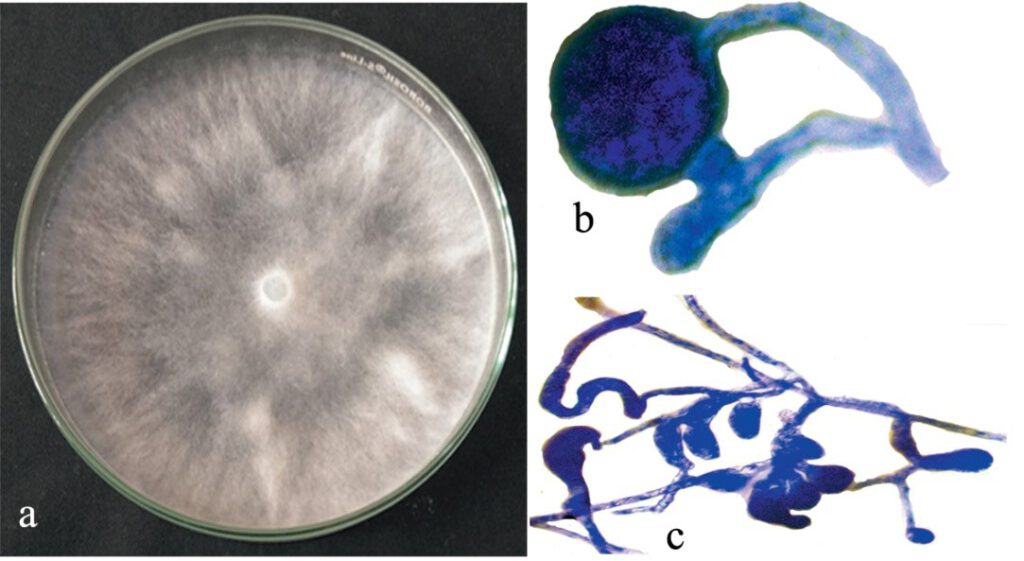Pythium deliense Meurs
MycoBank number: MB 262934; Index Fungorum number: IF 262934; Facesoffungi number: FoF 10628;
The different isolates of Pythium grown on PDA and CMA exhibited different growth rates (av. 34.3 mm on PDA and 36.7 mm on CMA) but have floral cottony type colony morphology (Fig. 2a). The sizes of the main hyphae were 7–9 μm. Sporangia were observed as filamentous inflated or torulated structures with swollen side branches and mostly terminal (Fig. 2c). The encysted zoospores were 8–12 μm in diameter. The production of oogonia was observed in isolates after 48 h by the grass leaf method. They were smooth, terminal and globose, 16–24 μm (av. 19.7 μm) in diameter. These characters showed close similarity with P. aphanidermatum but the bending of oogonial stalks towards the antheridia was the unique character of P. deliense (Fig. 2b). Antheridia monoclinous, broad, apical and/or intercalary (6.2–8.3 μm length). Oospores were highly aplerotic, 15–19 μm (av. 16.3 μm) diameter and wall thickness were up to 2 μm. The identity of Pythium isolates was further confirmed molecularly. Amplicons of the expected size were sequenced and a BLAST search gives the closest similarity with P. deliense having 100% resemblance.

Fig. 1 – Morphology of the pathogen. a Colony morphology on PDA. b Oogonium and antheridium. c Sporangia. Scale bars: b-c = 10 µm.
